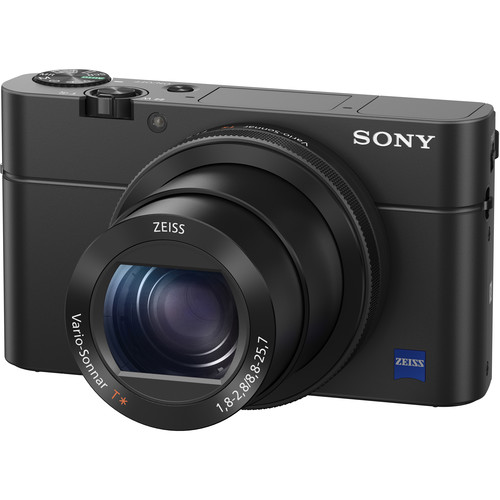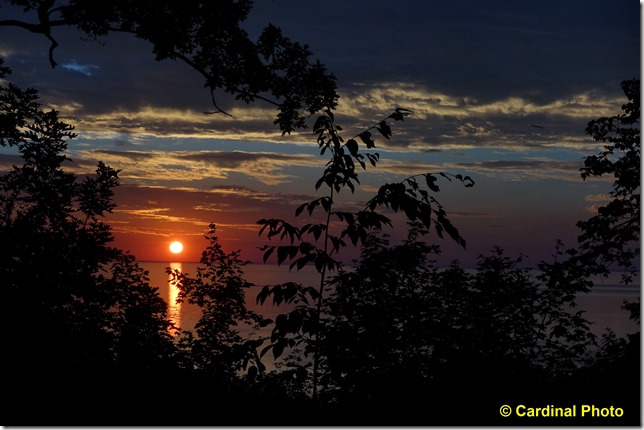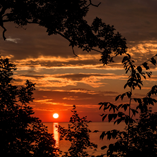- Photo Safaris
- Alaska Bears & Puffins World's best Alaskan Coastal Brown Bear photo experience. Small group size, idyllic location, deluxe lodging, and Puffins!
- Participant Guestbook & Testimonials Candid Feedback from our participants over the years from our photo safaris, tours and workshops. We don't think there is any better way to evaluate a possible trip or workshop than to find out what others thought.
- Custom Photo Tours, Safaris and Personal Instruction Over the years we've found that many of our clients & friends want to participate in one of our trips but the dates we've scheduled just don't work for them or they'd like a customized trip for their family or friends.
- Myanmar (Burma) Photo Tour Myanmar (Burma) Photo Tour December 2017 -- with Angkor Wat option
- Reviews Go hands-on
- Camera Reviews Hands-on with our favorite cameras
- Lens reviews Lenses tested
- Photo Accessories Reviews Reviews of useful Photo and Camera Accessories of interest to our readers
- Useful Tools & Gadgets Handy tools and gadgets we've found useful or essential in our work and want to share with you.
- What's In My Camera Bag The gear David Cardinal shoots with in the field and recommends, including bags and tools, and why
- Articles About photography
- Getting Started Some photography basics
- Travel photography lesson 1: Learning your camera Top skills you should learn before heading off on a trip
- Choosing a Colorspace Picking the right colorspace is essential for a proper workflow. We walk you through your options.
- Understanding Dynamic Range Understanding Dynamic Range
- Landscape Photography Tips from Yosemite Landscape Photography, It's All About Contrast
- Introduction to Shooting Raw Introduction to Raw Files and Raw Conversion by Dave Ryan
- Using Curves by Mike Russell Using Curves
- Copyright Registration Made Easy Copyright Registration Made Easy
- Guide to Image Resizing A Photographers' Guide to Image Resizing
- CCD Cleaning by Moose Peterson CCD Cleaning by Moose Peterson
- Profiling Your Printer Profiling Your Printer
- White Balance by Moose Peterson White Balance -- Are You RGB Savvy by Moose Peterson
- Photo Tips and Techniques Quick tips and pro tricks and techniques to rapidly improve your photography
- News Photo industry and related news and reviews from around the Internet, including from dpreview and CNET
- Getting Started Some photography basics
- Resources On the web
- My Camera Bag--What I Shoot With and Why The photo gear, travel equipment, clothing, bags and accessories that I shoot with and use and why.
- Datacolor Experts Blog Color gurus, including our own David Cardinal
- Amazon Affiliate Purchases made through this link help support our site and cost you absolutely nothing. Give it a try!
- Forums User to user
- Think Tank Photo Bags Intelligently designed photo bags that I love & rely on!
- Rent Lenses & Cameras Borrowlenses does a great job of providing timely services at a great price.
- Travel Insurance With the high cost of trips and possibility of medical issues abroad trip insurance is a must for peace of mind for overseas trips in particular.
- Moose Peterson's Site There isn't much that Moose doesn't know about nature and wildlife photography. You can't learn from anyone better.
- Journeys Unforgettable Africa Journeys Unforgettable -- Awesome African safari organizers. Let them know we sent you!
- Agoda International discounted hotel booking through Agoda
- Cardinal Photo Products on Zazzle A fun selection of great gift products made from a few of our favorite images.
- David Tobie's Gallery Innovative & creative art from the guy who knows more about color than nearly anyone else
- Galleries Our favorite images
Sony RX100 Mark IV field tested: More camera for more money
Sony RX100 Mark IV field tested: More camera for more money
Submitted by David Cardinal on Tue, 08/11/2015 - 08:57
 For those have followed the ground-breaking Sony RX100 since it became one of the first and best cameras to fit a 1-inch sensor into a compact form factor, each new version is eagerly anticipated. The good news is that Sony has steadily improved the camera's features with each updated model. However, pure image quality has plateaued. I've been shooting with the new Sony RX100 IV, and enjoying its cool new video features, but for still photographers, the upgrades may not be worth the new high price tag…
For those have followed the ground-breaking Sony RX100 since it became one of the first and best cameras to fit a 1-inch sensor into a compact form factor, each new version is eagerly anticipated. The good news is that Sony has steadily improved the camera's features with each updated model. However, pure image quality has plateaued. I've been shooting with the new Sony RX100 IV, and enjoying its cool new video features, but for still photographers, the upgrades may not be worth the new high price tag…
For starters, the Mark IV (aka Mark 4) looks almost identical to previous versions. Personally, I don't like the Sony menu system as much as Canon's, but it is very usable, and highly customizable. The lens is still a high-quality Zeiss f/1.8-f/2.8 24-70mm equivalent zoom with , although somewhat disturbingly, it didn't do quite as well as the Mark III in some of PC Magazine's bench testing (less sharp towards the edge of studio test shots). The new model is quicker to focus, and offers higher frame rates of 8.6 fps and 16.1 fps in high-speed continuous. It feels like it acquires focus faster and even more accurately than previous versions. While the Optical Viewfinder still has its awkward "pull up and then out" design, it is higher-resolution and easier to use than the older version. The rear LCD is still not a touch screen, which may disappoint those used to clicking where they want to focus, but it is brighter and easier to see in sunlight than prior versions. The lens motor is slow enough that the camera takes over 2 seconds from turn on to ready to shoot, which can be annoying.

Sunset over Lake Michigan – JPEG from camera:
(only resized -- thus the awkward horizon)
Sony RX100 IV, f/10 @ 1/200s, –3 e.v., ISO 125
The built-in flash is usable for close shooting, and can be tilted slightly for bouncing, but there is no hot shoe for an accessory flash, unfortunately. NFC is a nice addition to the camera’s WiFi capability, so that simply touching the camera to your NFC-capable phone or tablet will pair it – eliminating the need to type in an arcane password. You can use WiFi either to transfer images or MP4 videos, or to remote control the camera from your mobile device (although apparently only for JPEG images). There is a built-in neutral density (ND) filter for those looking to get ultra-slow shutter speeds for freezing water or other special effects.
Massive video upgrade – but not audio
The big news in the Mark IV is the stacked sensor design. By layering the various electronic components that go into capturing and recording video, Sony has improved the video bandwidth of the camera. That means it can capture 4K video, or do High Frame Rate (up to 960 fps) lower-resolution video. The HFR feature is really cool for making slow-motion videos, and the results are much higher quality than with previous compact cameras that have offered high-frame-rate shooting. Unfortunately the HFR capability is quite limited -- to 2 to 4 seconds of activity -- and the interface is somewhat awkward. HFR recording is also video only. I can understand that a sound track played back at super-low speed might not sound like much, but I think it'd be nice if the audio was there for use in post-production.
One of the coolest features of the Sony RX100 IV is the ability to capture high frame rate (HFR) video,
allowing the creation of short slow-motion clips. This one was shot at 460 fps.
4K video is all the rage now, so it’s a feature everyone wants, but it is overkill for most online sharing, and for serious work needs external audio recording capability, so I'm not sure how many folks will spring for the additional cost of the camera to get this capability. Unfortunately, for a camera that sells for more than many DSLRs and is aimed at fairly serious video capture, there is no provision for external audio. The built-in microphone is good as far as it goes, but not being able to use a shotgun or remote mic greatly limited the number of video projects where the Sony RX100 Mark IV will be the right choice.
Sony's application ecosystem: Extend your camera by spending more money
Sony has been rolling out additional features for its compact cameras in the form of downloadable applications. Some of the functions are important -- like time lapse. Others replicate what you can already do if you shoot Raw & do your own processing -- like its new Tilt/Shift emulator. However, most of the good ones cost a few bucks, which can be pretty aggravating if you've just spent nearly a grand on a top of the line point and shoot. For my money, Sony would be better served by leaving those applications as additional cost extras for its low-end cameras, but allowing them to run for free on its high-end models. I can't imagine they make any real money on them in the first place, and it just irks their premium customers.

The built-in flash is good for close-ups, but not much more
(there is no hot shoe for adding additional lighting)
Sony RX100 IV, f/3 @ 1/160s, ISO 200, flash
Bottom Line: If price is no object, this is one very slick point and shoot camera
For anyone on a budget, the best thing about the Mark IV version of the Sony RX100 is that it is starting to drive down the price of the Sony RX100 III. With the older model you get the same image quality and most of the features, for a couple hundred dollars less. However, if price is no object, the high frame rate video, 4K recording capability, faster AF, and higher frame rate for burst shooting (plus the improved LCD and EVF) are all welcome updates and make the Sony RX100 IV the new king of the (barely) pocketable compact cameras.
If the 24-70mm zoom range is too small for you, or the price tag too high, the Canon G7 X is a great choice. Going the other way, if you can stomach a larger model to get an even better quality image then the Lumix LX100 delivers and keeps your price under $1000. For comparison, you can read our review of the Canon and our review of the Lumix. If all of these sound too big and too expensive for you, our personal “pocket favorite” is still the relatively-inexpensive Canon PowerShot S120. If you can’t decide, check out our article on deciding What size camera is right for you.
Sample Images
Here are a variety of images I captured while testing the Sony RX100 IV – most are only resized from the out-of-camera JPEGs:
- Log in to post comments








